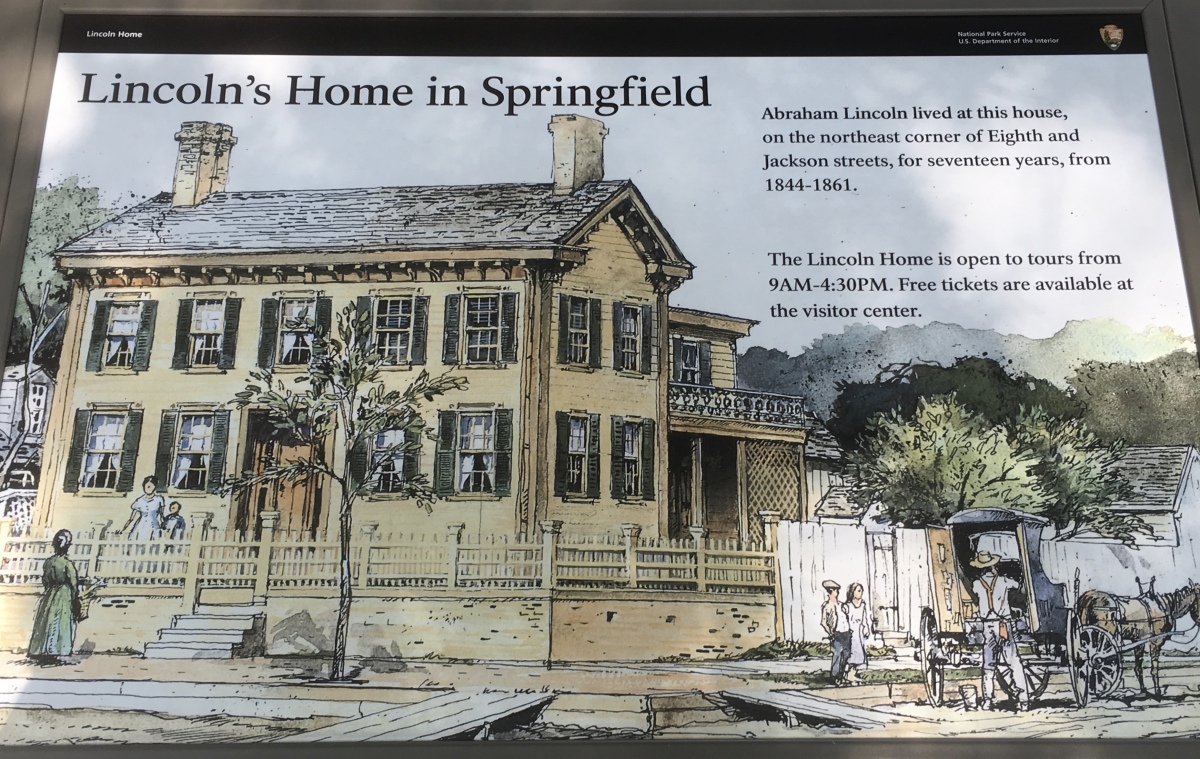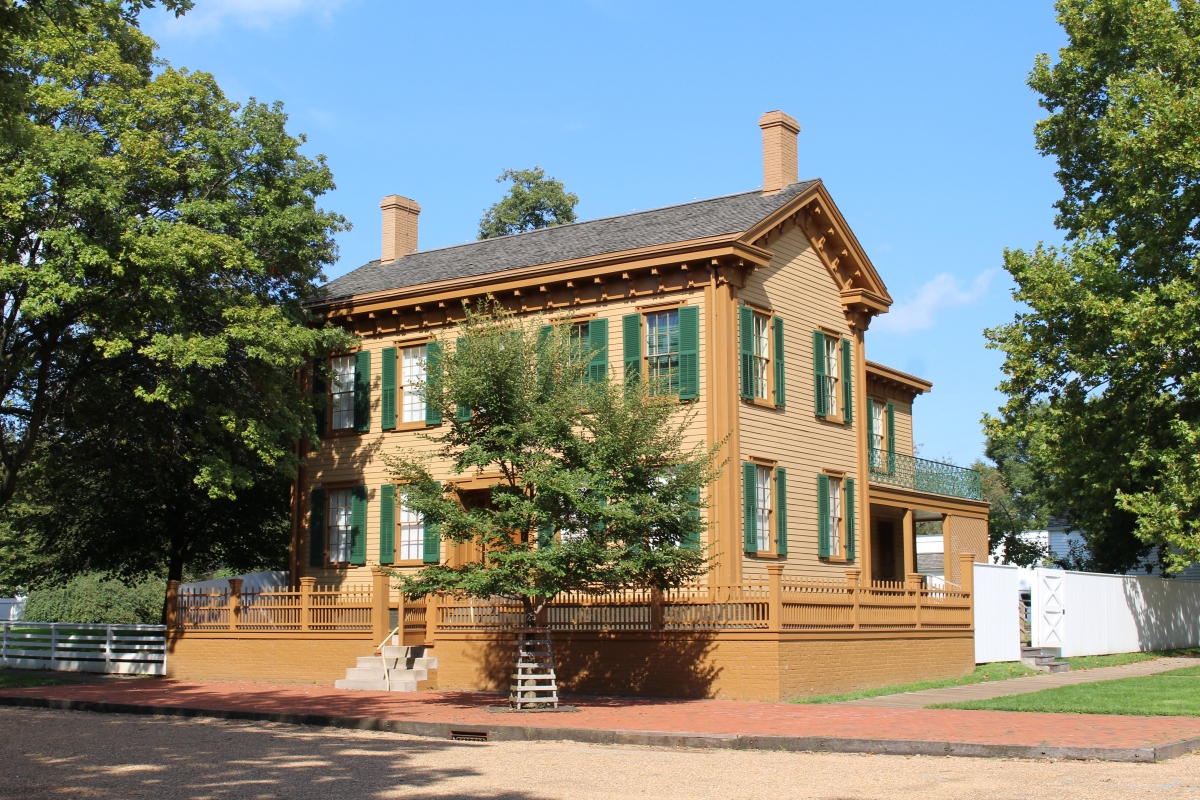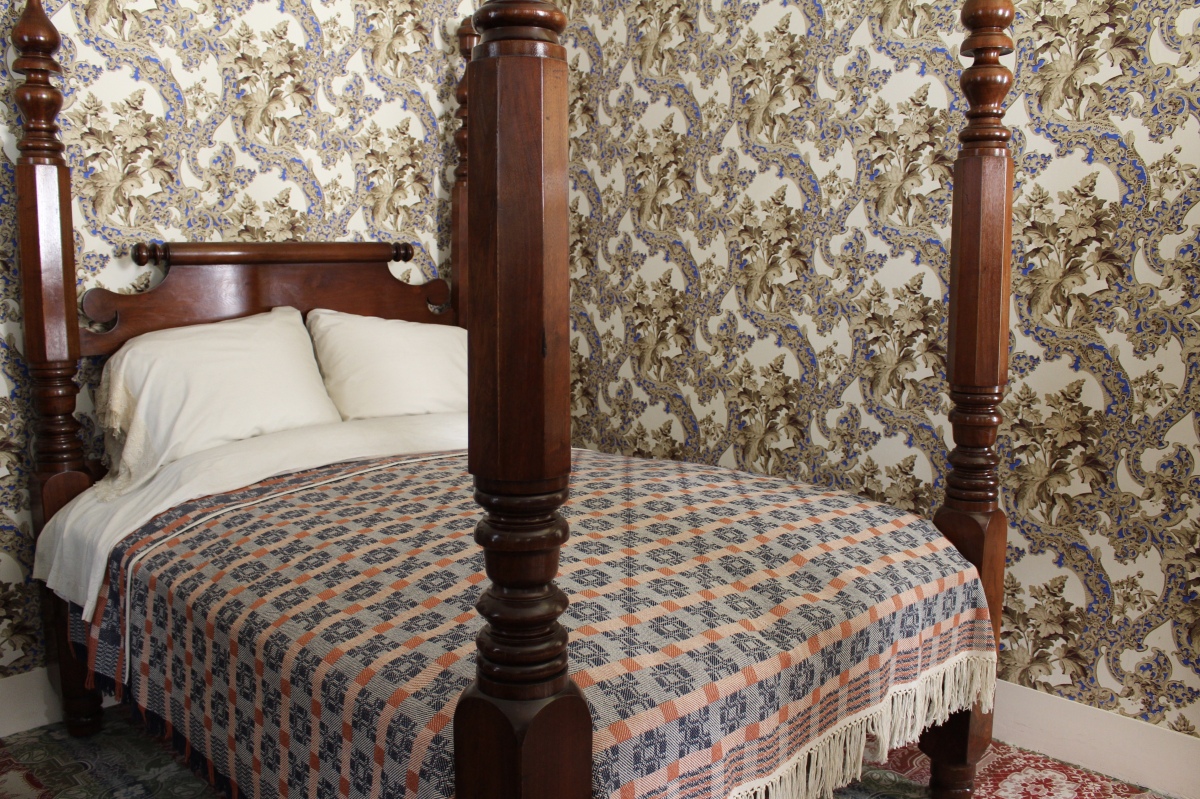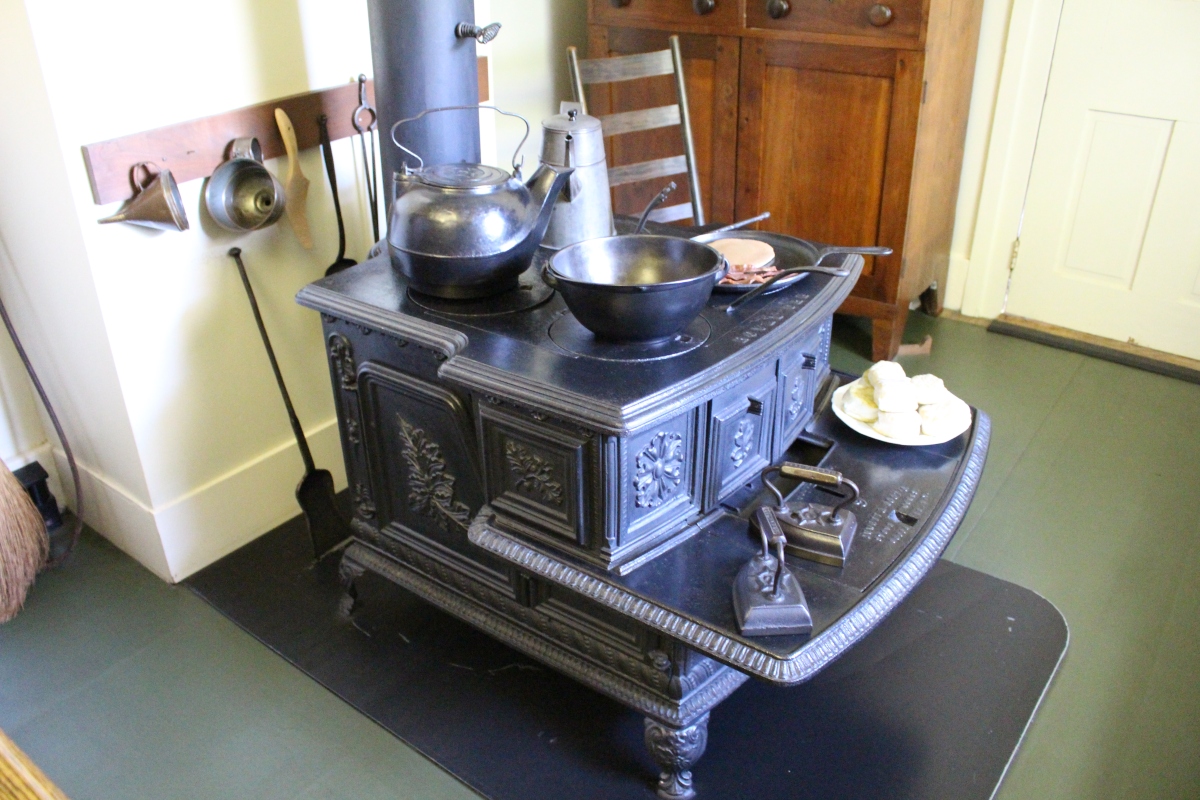On my Road Trip to Nowhere, I visited the Lincoln Home National Historic Site in Springfield, Illinois at the end of a long day of driving from Cincinnati, Ohio.

Lincoln’s Home in Springfield
Springfield played a vital role in Lincoln’s development. In 1837, the year it became the Illinois State Capital, Lincoln rode into Springfield on horseback with all his belongings in two saddlebags. He was a bachelor, inexperienced lawyer, and two-term legislator.
At that time, the town had a population of 2,500 and had become the focal point of law, politics, and state government, yet livestock freely roamed its muddy streets.
Two decades later, Lincoln had started a family, won hundreds of cases, and forged connections that carried him to the White House in 1861.
He met and married the educated Kentuckian Mary Todd, in 1842. In 1844, they bought a small cottage. The cottage below is similar to the one the Lincolns first lived in, but the original cottage was expanded over several renovations into the two-story house at the corner of Eighth and Jackson Streets. Here three of their four children were born, and one died.

cottage like the Lincoln’s 1st home in Springfield before they expanded it
Lincoln, a self-taught lawyer with only one year of frontier schooling, became successful as an attorney here. He became one of the state’s best courtroom attorneys.
He served eight years in the Illinois House of Representatives from 1834-1842. In 1846, he was elected to the House of Representatives and served one term.
In 1858, he was nominated to run for the U.S. Senate, but he lost to Stephen Douglas. The Lincoln-Douglas debates set the stage for his election to U.S. President as the 16th President of the United States (1861-1865).
As soon as Lincoln was elected in 1860, the Lincolns gave away or sold most of their furnishings and arranged to rent out the house to Lucian Tilton, president of the Great Western Railroad. The home immediately became a tourist destination.
On February 11, 1861, the Lincoln family left Springfield by train, never to return.
On May 4, 1865, Lincoln’s somber yet grand funeral procession passed in front of the Lincoln home on its way to Oak Ridge Cemetery. After his death, the home became a shrine, and, in 1972, a National Historic Site.

Lincoln Home
The Lincolns entertained their guests in the parlor, the most formal and public room. In 1860, when the Republican Party convention, held in Chicago, chose Lincoln as its candidate for President, a committee traveled to Springfield and, in this room, formally notified him of his nomination.

the parlor

dining room

dining area fireplace
Lincoln frequently worked from home on both his political and legal careers. The bedroom suite was in a private part of the home, but Mary chose the furnishings (and the wild wallpaper) to reflect the taste of a prosperous family.

Lincoln bedroom suite
By 1860, the oldest son Robert Todd (1843-1926) was away at school, and the two younger, mischievous boys, Willie and Tad, shared the bedroom below.

boys bedroom
Mary spent most of her time managing the household and raising the children. Much of her activity was centered in the kitchen.

kitchen
In Springfield during Lincoln’s day, many children did not attend school, as attendance was not mandatory. Pigs freely roamed the city streets. The town supported one portrait painter, one churn manufacturer, one collar maker, 20 clergymen, 22 attorneys, and 23 physicians. Two policemen patrolled by day and nine at night. Nearly 50% of Springfield was foreign born, including immigrants from Ireland, Germany, England, Portugal and Scotland.
Lincoln left Springfield intending to preserve the Union and prevent the spread of slavery.
At the height of the Civil War, his friend from Springfield, James C. Conkling, invited him to return for a pro-Union rally. Lincoln declined, but asked his friend to read a letter “very slowly” at the rally. In the letter, Lincoln defended the Emancipation Proclamation and use of African-American troops.
Nearly two years later, Lincoln’s slain body was returned to Springfield. As president, he had accomplished his mission – the country united and slavery abolished.

Springfield layout
The historical neighborhood of Lincoln’s home shows everyday life in the 19th century, with uneven and slippery boardwalks, walking surfaces with loose stones, and narrow staircases.

streets of Springfield, Illinois

house in the neighborhood

house in the neighborhood
The Underground Railroad refers to the efforts of enslaved African Americans to gain their freedom by escaping bondage. Acts of self-emancipation made runaways “fugitives” according to the laws of the times. While most began and ended their journeys unassisted, each subsequent decade in which slavery was legal in the U.S. saw an increase in active efforts to assist escape. Abraham Lincoln’s neighbor, Jameson Jenkins, played an important role in the hopes of freedom seekers passing through Springfield, Illinois from the bordering slave states of Kentucky and Missouri.
Jameson Jenkins was born in North Carolina sometime around 1810. It is unclear whether he was born into slavery or free, but he was documented as being a free man by 1835. Within 10 years, he had left his home state making the risky trek through slave states to reach the state of Indiana, where he married Elizabeth Pelham. In 1844, after the birth of their daughter Nancy, the family traveled on to Illinois.
In 1848, Jenkins and his family purchased a small two-story home, which sat on the northwest corner of the lot pictured below. Jameson was an enterprising, relatively successful drayman (teamster). The Jenkins family contributed to their middle class neighborhood that also represented Lincoln’s dream: to rise by a person’s own abilities, free from the shackles of slavery that deprived a human’s right to life, liberty and the pursuit of happiness.

Underground Railroad in Lincoln’s neighborhood
In 1850, Jenkins was involved in an incident that was reported in the local newspaper as a “slave stampede.” Jenkins enlisted a group of runaway slaves in escaping the hands of slave catchers, and took the fugitives north to Bloomington, Illinois. During the following days, newspapers reported contradictory stories regarding the runaway slaves, including reporting their capture and that they were betrayed by Jenkins. The newspapers later revealed that, rather than betraying the runaway slaves, Jenkins had indeed assisted them. The newspaper explained that the contradictory stories were passed on to them so that the railroad car that Jenkins traveled on to Bloomington would not be discovered. Jameson had risked his home, his livelihood, and his life to deliver freedom to those who had once been enslaved.

neighborhood house
Abraham Lincoln dreamed of making “the race of life” open to all Americans. As a frontier farm boy, failed store owner, and successful attorney, he epitomized the 19th century ideal of getting ahead through migration, education and hard work.

Lincoln’s Home
All information is from plaques or brochures from the National Park Service.
Soon after my visit, I checked in at Baymont by Wyndham Springfield, and went out to dinner at Dublin Pub, where I had a house salad, a cup of chicken noodle soup, and a cup of greasy pub chili piled high with mini-oyster crackers. 🙂
The next day, I’d be driving to Omaha, Nebraska.
*Monday, September 2, 2019*
*Steps: 5,999, or 2.54 miles* Drove 335.8 miles.
*********************
“PHOTOGRAPHY” INVITATION: I invite you to create a photography intention and then create a blog post for a place you have visited. Alternately, you can post a thematic post about a place, photos of whatever you discovered that set your heart afire. You can also do a thematic post of something you have found throughout all your travels: churches, doors, people reading, people hiking, mountains, patterns, all black & white, whatever!
One of my intentions was to take pictures of strange and quirky places, or places that showed the essence of a place. Springfield, Illinois is all about Abraham Lincoln, so this photo series captures what the town is all about.
You probably have your own ideas about this, but in case you’d like some ideas, you can visit my page: photography inspiration.
I challenge you to post no more than 20-25 photos and to write less than 1,500 words about any travel-related photography intention you set for yourself. Include the link in the comments below by Wednesday, May 13 at 1:00 p.m. EST. When I write my post in response to this challenge on Thursday, May 14, I’ll include your links in that post.
This will be an ongoing invitation, every first, second, and third (& 5th, if there is one) Thursday of each month. Feel free to jump in at any time. 🙂
I hope you’ll join in our community. I look forward to reading your posts!



Such a solid looking house. What a great president he was
LikeLike
Yes, he was, Pauline. And I like that he came from such humble beginnings.
LikeLiked by 1 person
The great American dream…
LikeLike
Yes, for sure, although these days it’s a much harder dream to achieve. 😦
LikeLiked by 1 person
Well researched and very interesting. Another solid post with great images.
Mari
LikeLike
Thanks so much, Mari. I hope you are well. 🙂
LikeLike
I didn’t know much about Springfield, then or now. Now I know much more about then–for which I’m grateful.
LikeLike
I think its only claim to fame is Lincoln’s home, although I read there are a few other things in town. It seemed a bit run down; it probably had better days when Lincoln was there. 🙂
LikeLike
We visited there last summer and really enjoyed it. The museum especially was fantastic. A great write-up, thanks for bringing back some fun travel memories
LikeLike
Thanks for the great history lesson.
LikeLike
Thanks, Carol. I always learn a thing or two myself when I visit these historic sites. 🙂
LikeLiked by 1 person
Interesting story – I knew very little about where Lincoln was from.
LikeLike
I learned a lot too, Anabel. I knew he had lived in Springfield, but I didn’t know how long he was there or what he did. 🙂
LikeLiked by 1 person
Great read! He is one of my favorite presidents to learn about, and I hope to make it here one day and see the house in person.
LikeLike
Thank you, Marley. He’s one of my favorite presidents too, along with Teddy Roosevelt. I also went to Lincoln’s boyhood home in Lincoln City, Indiana. That was an interesting place too. 🙂
LikeLiked by 1 person